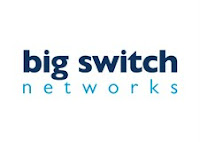Q&A with Mike Cohen from Big Switch Networks (http://www.bigswitch.com/):
Could you provide an overview of the most recent developments at Big Switch Networks and the latest developments on the software defined networking (SDN) Controller?
Big Switch is at the forefront of the industry’s evolution to SDN based approach to software-enabled networks. Recently, we announced OpenStack support, allowing developers to plug-in to our open source OpenFlow Controller, Floodlight, for programmable networking in multi-tenant cloud and virtualized environments. Continuing on the movement towards an open SDN architecture, the new plugin allows OpenStack users to create and manage virtual networks using both hypervisor-based and physical OpenFlow switches controlled by Floodlight.
And why is this important to developers?
This particular announcement allows for developers to have the programmability and vendor independence of OpenFlow on top of the benefits of cloud automation from OpenStack. Overall, we are seeing the beginning of the modernization of the networking ecosystem built on an open SDN architecture. The pillars of that architecture – open source, open APIs and open standards – are the pillars that we stand by and are constantly working towards.
What exactly is Floodlight?
Released this past January, Floodlight is an Apache-licensed open source OpenFlow controller. OpenFlow controllers are central components of SDN as they capture control information from OpenFlow-enabled switches to centrally manage networks. Floodlight serves the needs of academics, offers a powerful platform to commercial developers to build SDN network services and helps network administrators experience OpenFlow first hand. Floodlight is an open, production-ready OpenFlow controller, with quite a few ready-made networking services that the OpenStack community can leverage and innovate upon.
How does Floodlight’s Openstack support work?
Floodlight’s OpenStack support relies on Quantum, a network connectivity as a service between interface devices (e.g. vNICs) managed by other OpenStack services. There are two pieces of technology we have developed to integrate Floodlight and OpenStack Quantum. First, there is a Quantum plugin we’ve called RestProxy, which packages Quantum data and exposes it over a Rest interface. Second is a Layer 2 virtual networking module for Floodlight, which allows the user to segment sets of MAC addresses into virtual networks as the Quantum API requires. In addition to support for hypervisor-based switches like Open vSwitch, Floodlight brings support for a growing ecosystem of physical OpenFlow switches.
What has the response from the industry been on SDN and OpenFlow switches?
We have been extremely excited by the growing momentum around SDN, with major infrastructure vendors bringing OpenFlow switches to market. In terms of Floodlight, we have had great feedback and fast adoption. The controller is now downloaded more than 1200 times per month by a development community spanning four continents.
Tell me about Big Switch’s customers? What types of organizations and people are you seeing using this product?
We are seeing benefits and trends with our customers and other SDN solution customers, especially in enterprise data centers, WAN/carrier data centers and on campuses.
In enterprise data centers, SDN solutions provide a better optimization of the compute resources, allowing virtual machine mobility across network segments. Multi-tenancy is also frequently deployed helping public cloud providers to offer Network-as-a-Service to their customers without over provisioning or helping enterprises to offer isolated virtual networks to departments requiring different networking properties but sharing the same underlying infrastructure. We have also seen several cases of Data Analysis Networks, where traffic is filtered, replicated, and delivered to a variety of traffic analysis tools using an SDN and OpenFlow-enabled switches instead of using dedicated hardware.
In WAN/carrier or hyperscale data centers, the main driver is to reduce the operational and equipment cost. SDN solutions provide automated traffic engineering as well as more granular billing for end-users for instance.
In the academic setting, SDN solutions are deployed to manage phones, credit card registers, laptops and other multiple device configurations and policies across wired and wireless networks. We have also seen several multi-tenant scenarios, including dev labs, students, university staff and other employees, as well as more flexible network access control deployments.
What can we expect to see from Big Switch Networks in the remainder of 2012?
Our product is in controlled release and we are building up our sales and support processes to be more efficient before scaling.




